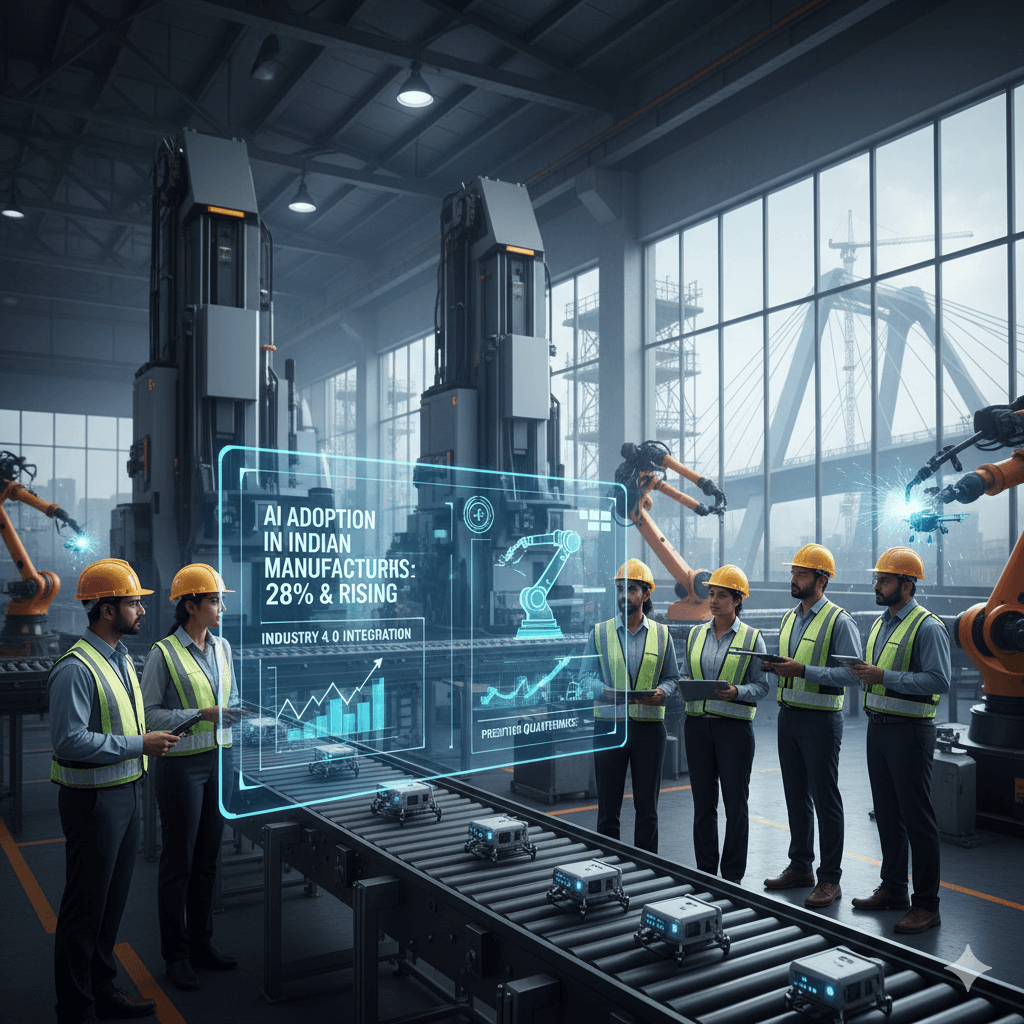
Discover how Artificial Intelligence is being adopted across India in 2025: growth numbers, industry leaders, practical use cases, the barriers companies face, and pragmatic steps to prepare for an AI-first future.
| Metric | 2025 Insight |
|---|---|
| Urban generative AI use | ~56% of adults in metropolitan areas |
| Businesses implemented AI | ~23% (with ~73% planning adoption in 2025) |
| Top sector | Banking & Financial Services (BFSI) |
| Projected GDP impact | Up to US$500 billion by 2025 (with integrated AI/data strategies) |
India’s AI adoption rates are rising fast because the country combines a young, digitally literate population with growing cloud infrastructure and strong private & public investment. Crucially, visible ROI in verticals like finance, healthcare, and retail nudges more companies to pilot and scale AI projects.
Here are practical examples of how AI is being used right now across Indian industries:

AI powers fraud detection, credit scoring, personalized offers, and intelligent chatbots that reduce customer waiting time.

From diagnosing imaging scans to predicting patient outcomes and accelerating drug discovery, AI tools are helping clinicians make faster, informed decisions.
Recommendation engines, demand forecasting, and smart supply-chain planning are driving higher margins and better customer experiences.

Predictive maintenance and automated quality inspection reduce downtime and scrap, improving productivity on the shop floor.
Despite the momentum, multiple barriers remain:
AI will move from pilots to production: more sectors will adopt AI-as-a-service, generative models will become part of everyday workflows, and policymakers will catch up with stronger frameworks for ethical AI. Education and skilling will be a major focus — and companies that prioritize data & governance will lead the pack.
Welcome to the BlogzBite.com Informational Article Web Page.
 Our aim is to provide you all the latest informational articles related to different niches,
because we know knowledge is power and we want to be your medium of power.
Our aim is to provide you all the latest informational articles related to different niches,
because we know knowledge is power and we want to be your medium of power.